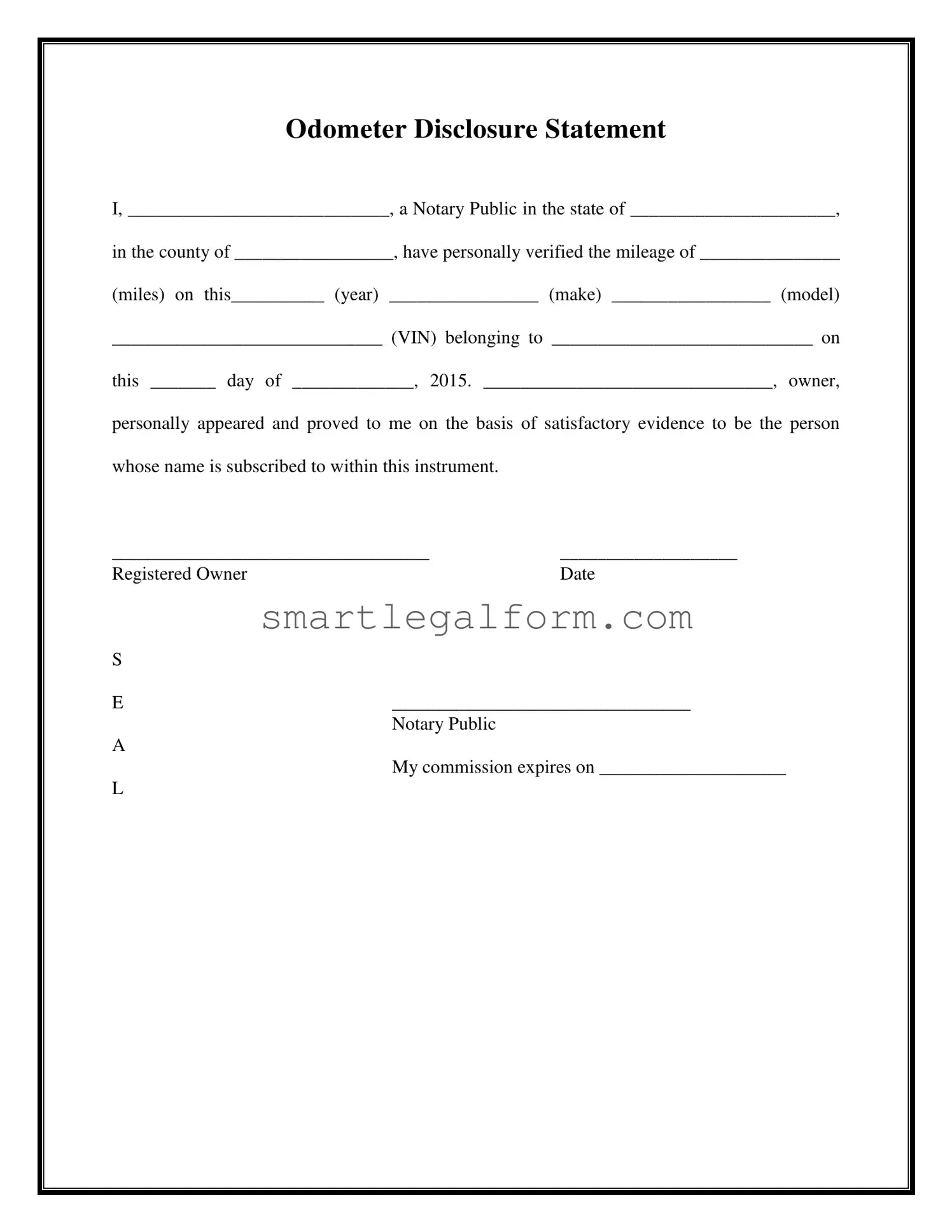Free Notarized Odometer Statement Form
The Notarized Odometer Statement is a legal document that certifies the mileage of a vehicle at the time of sale. This form, completed by a notary public, ensures that the odometer reading is accurate and provides protection against fraud in vehicle transactions. To facilitate a smooth sale, it is essential to fill out this form correctly; click the button below to get started.
Fill Out Your Form Online

